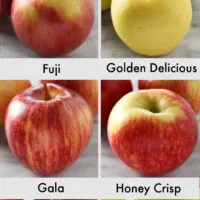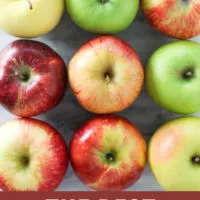Discover the best apples for juicing with these 18 hand-picked varieties, perfect for extracting the freshest flavor for sipping, cooking, and baking.
Choose between tangy Pink Lady, tart Granny Smith, succulent Honeycrisp, sweet Golden Delicious, and more!
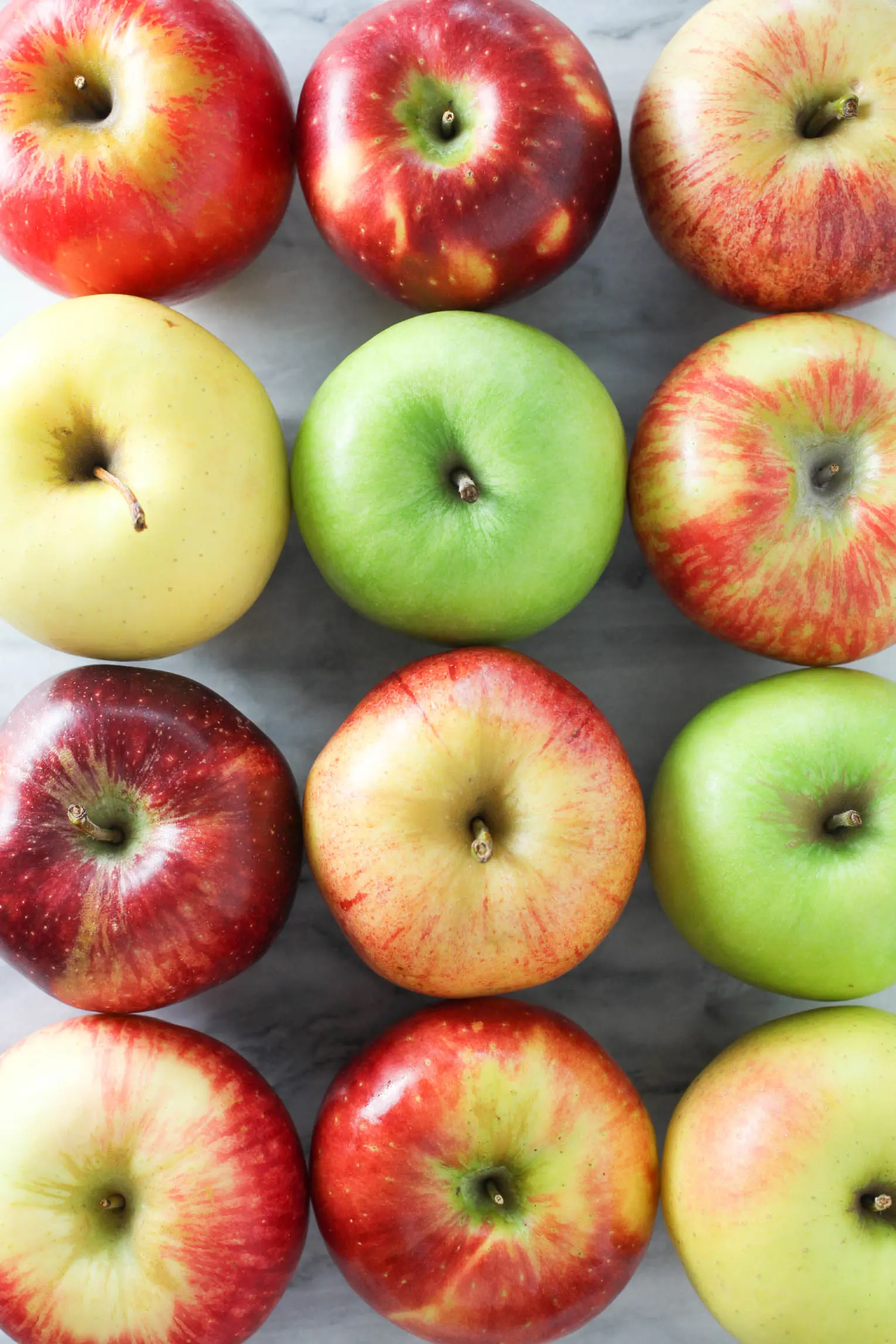
When it comes to apple juice, store-bought options offer convenience.
Still, nothing compares to the bold, rejuvenating, complex flavor of homemade apple juice extracted from only the finest apple varieties.
For that reason, in this comprehensive guide, we’re exploring 18 of the best types of apples for juicing, including interesting facts and unique characteristics that contribute to the excellence of each one of them.
Why Juice Your Own Apples
Before we discuss the best apple varieties, it’s worth noting that fresh apple juice reigns supreme over commercialized alternatives for a few reasons:
- Quality control. Apple juice from the store is often pasteurized and might contain chemicals, preservatives, and added sugar. However, juicing your own apples leaves you in complete control over the ingredient quality.
- Undiluted flavor. Store-bought simply cannot compare to freshly-squeezed apple juice’s pure, unaltered flavor.
- Maximum nutritional value. Squeezing fresh apples for juice retains more vitamins, minerals, and antioxidants than their commercial counterparts. In addition, you can always choose organic apples if desired.
How to Choose Apples for Juicing
Regardless of the type of apple or whether they are from the grocery store, farmer’s market, or an apple orchard, here’s what you should look for when picking:
- Freshness: Examine the skin to ensure the coloring is consistent with the variety and that the fruit has no blemishes or brown spots.
- Texture: Select crisp, firm apples if you prefer smooth apple juice with a refined mouth feel or fine-grained, pulpier varieties if you enjoy a pulpier consistency.
- Waxed vs. non-waxed: For the best results, select apples with only the natural protective layer of wax on the surface. If the apples have had additional wax sprayed on them, consider peeling the skin before using them.
Best Juicing Apples to Use
The apple variety you choose will determine the flavor of the juice.
Apples like Gala, Envy, Honeycrisp, Fuji, Red Delicious, or Golden Delicious have sweeter juice, whereas apples like Granny Smith, Braeburn, Red Prince, Pink Lady, or Empire are more tart and tangy.
Fun fact: There are 7,500 types of apples grown worldwide, with over 2,500 grown in the United States, so it would be nearly impossible to cover them all in this post.
That being said, here are 18 varieties that I’ve used to make apple juice with great tasting results (in alphabetical order):
Ambrosia
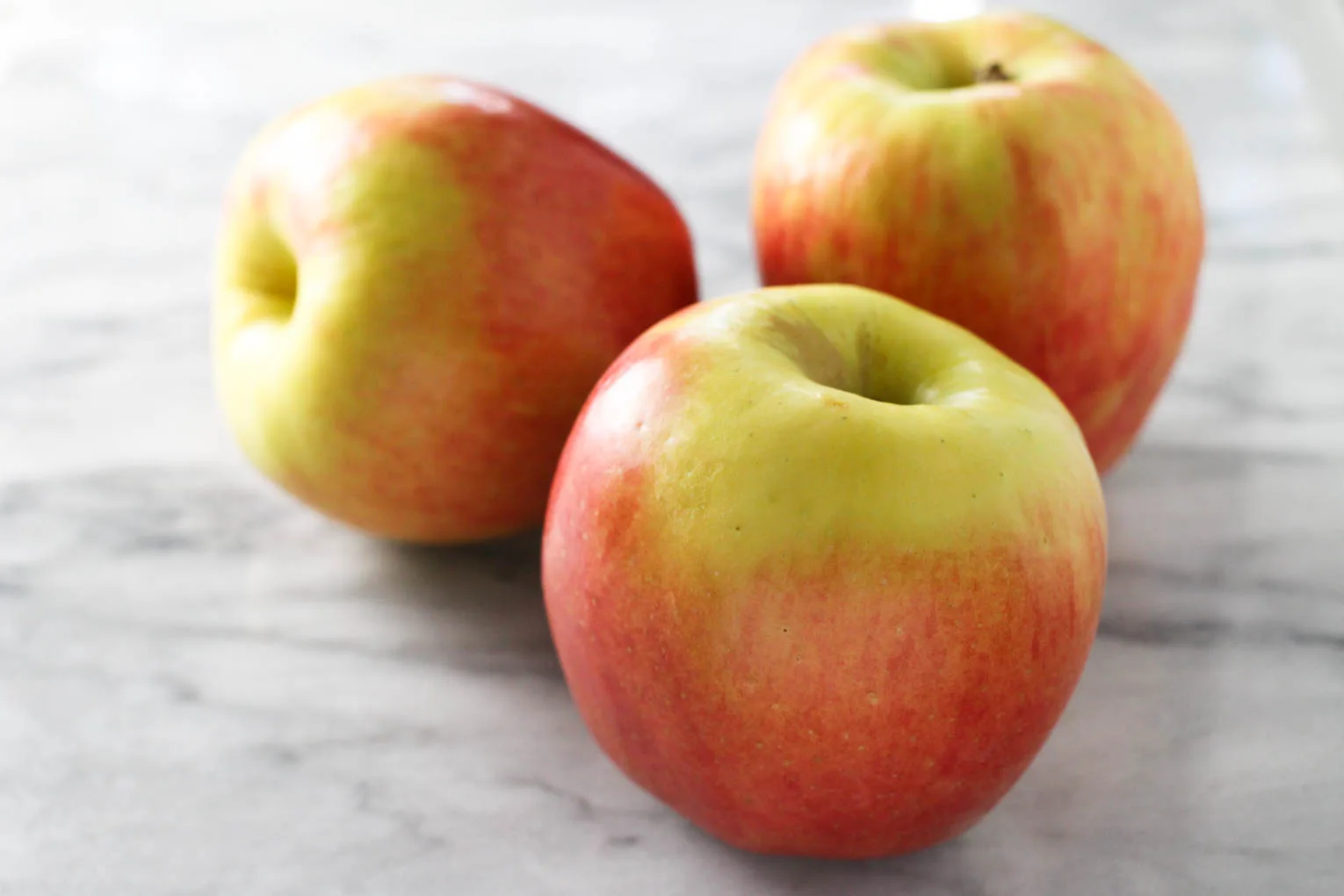
Ambrosia apples were discovered as a chance seedling in an orchard in British Columbia in the early 1990s.
The name “Ambrosia” derives from the term often used in ancient Greek mythology to describe “food of the gods,” which is precisely what this extraordinary apple variety tastes like!
- Color – Yellow-green skin lightly striped in blushed pink-orange pigment.
- Texture – Smooth, firm skin with soft, fine-grained flesh.
- Taste Profile – Sweet-honeyed flavor with subtle notes of citrus and tropical melon.
Braeburn
Braeburn apples originated in New Zealand in the 1950s. By the last few decades of the 20th century, they were cultivated in warm apple-growing regions all over the globe.
It is generally assumed to be a hybrid between Lady Hamilton and possibly Granny Smith, though there is no scientific evidence to support that claim.
- Color – One of the first “bi-colored” varieties boasting shades of muted red, orange, and green.
- Texture – Dense and crisp with the right amount of satisfying snap!
- Taste Profile – Intensely apple-y with a contrasting, delicious zing!
Cosmic Crisp
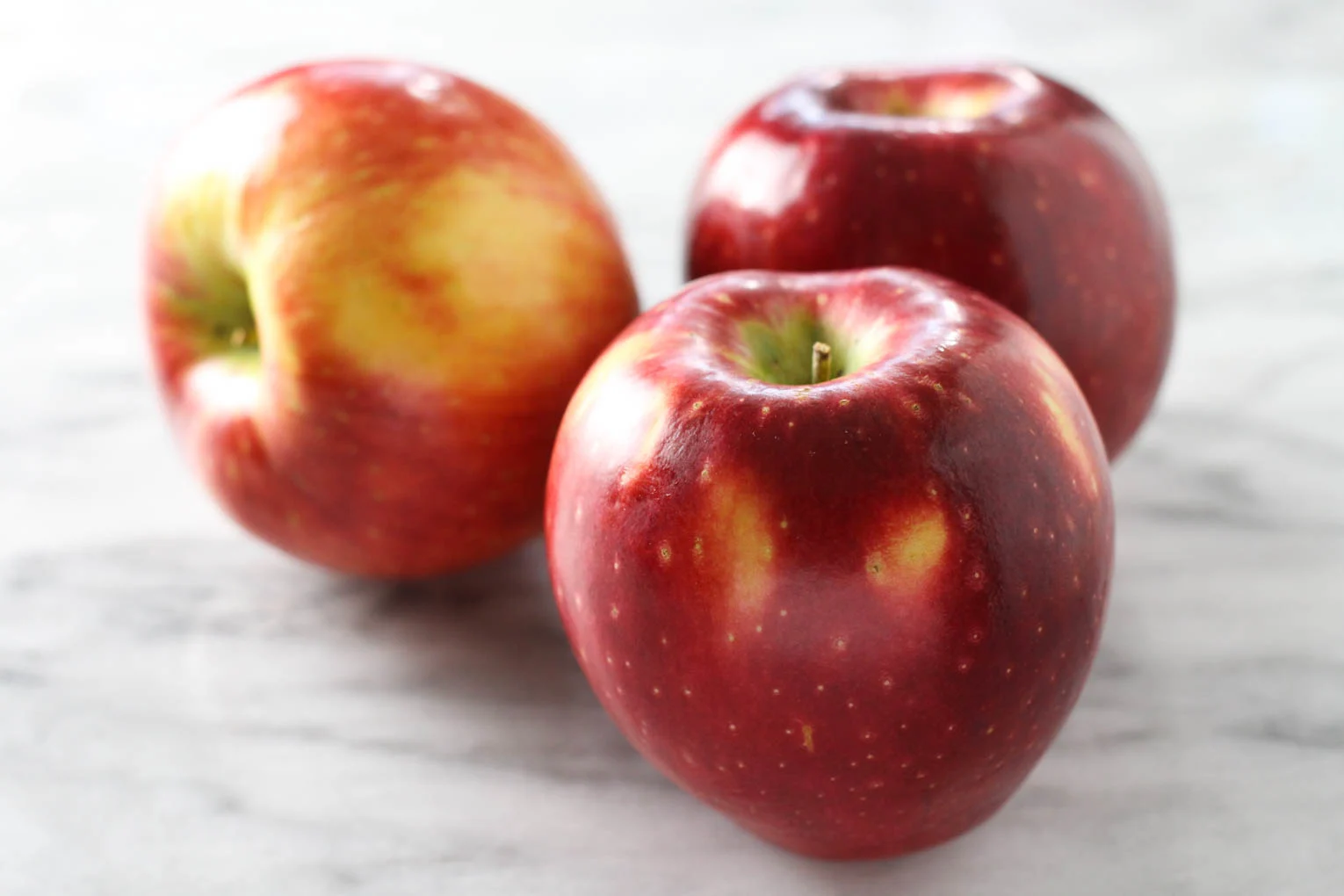
Cosmic Crisp apples are a relatively new and highly sought-after apple.
They result from over 20 years of extensive research and cross-breeding efforts between Honeycrisp and Enterprise apples by Washington State University.
- Color – Rich, dark red skin color with blotches ranging from white to yellow to green.
- Texture – Thick, bruise-resistant skin with firm, juicy flesh and a delicious snap!
- Taste Profile – The high sugar and acidity content offers a very sweet and tart flavor profile, with honey and citrus-like notes.
Empire
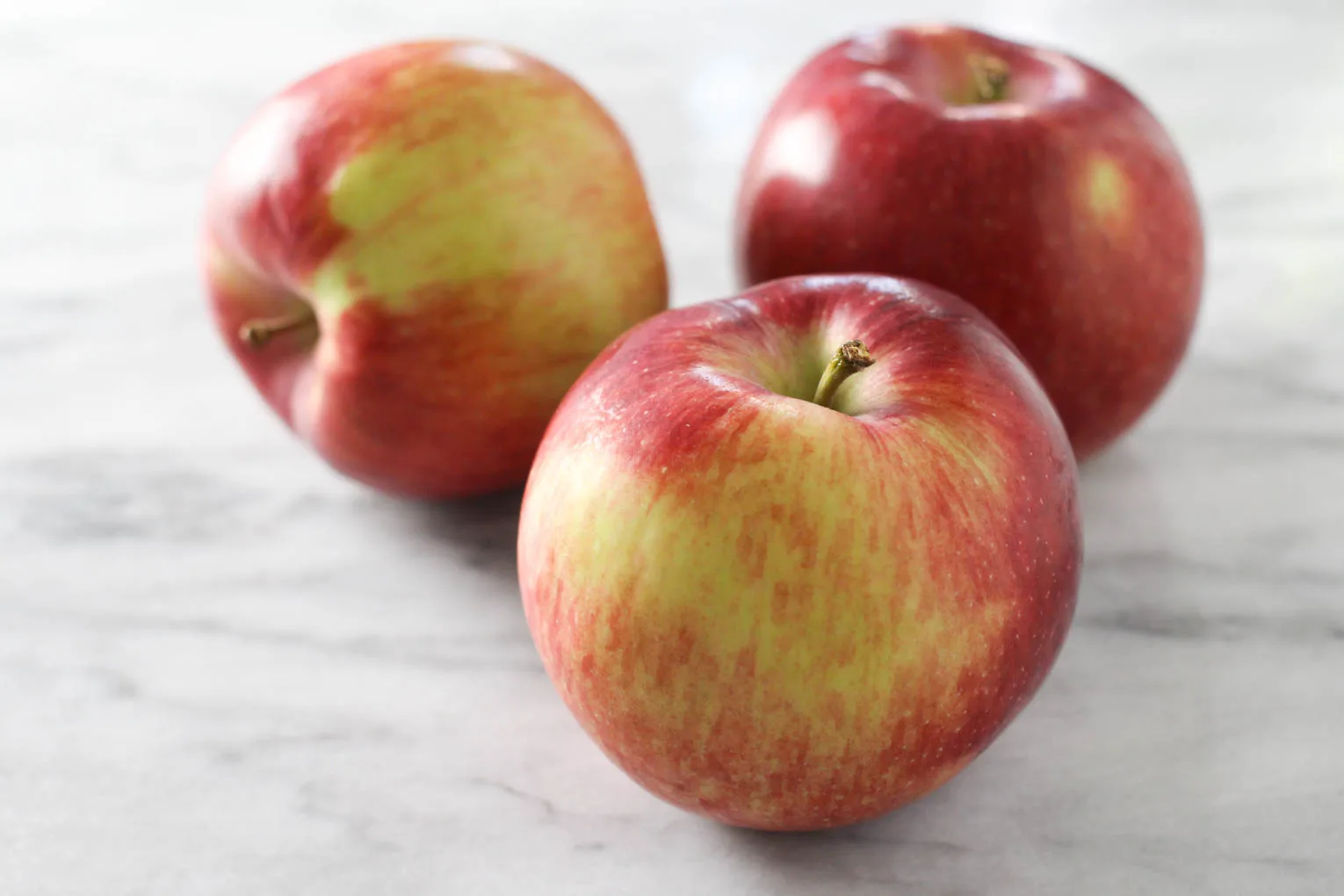
Empire apples were first developed at Cornell University’s New York State Agricultural Experiment Station in the 1940s.
Although these apples account for nearly 60% of New York’s apple exports, they aren’t often easy to find as they comprise only about 2% of the apple industry in the U.S.
- Color – Luscious red skin brushed with hints of green and yellow.
- Texture – Thin, tender skin with crisp, aqueous pure white flesh.
- Taste Profile – Perfectly sweet with delicate tangy undertones, often described as the essence of melon, pineapple, or elderflower.
Envy
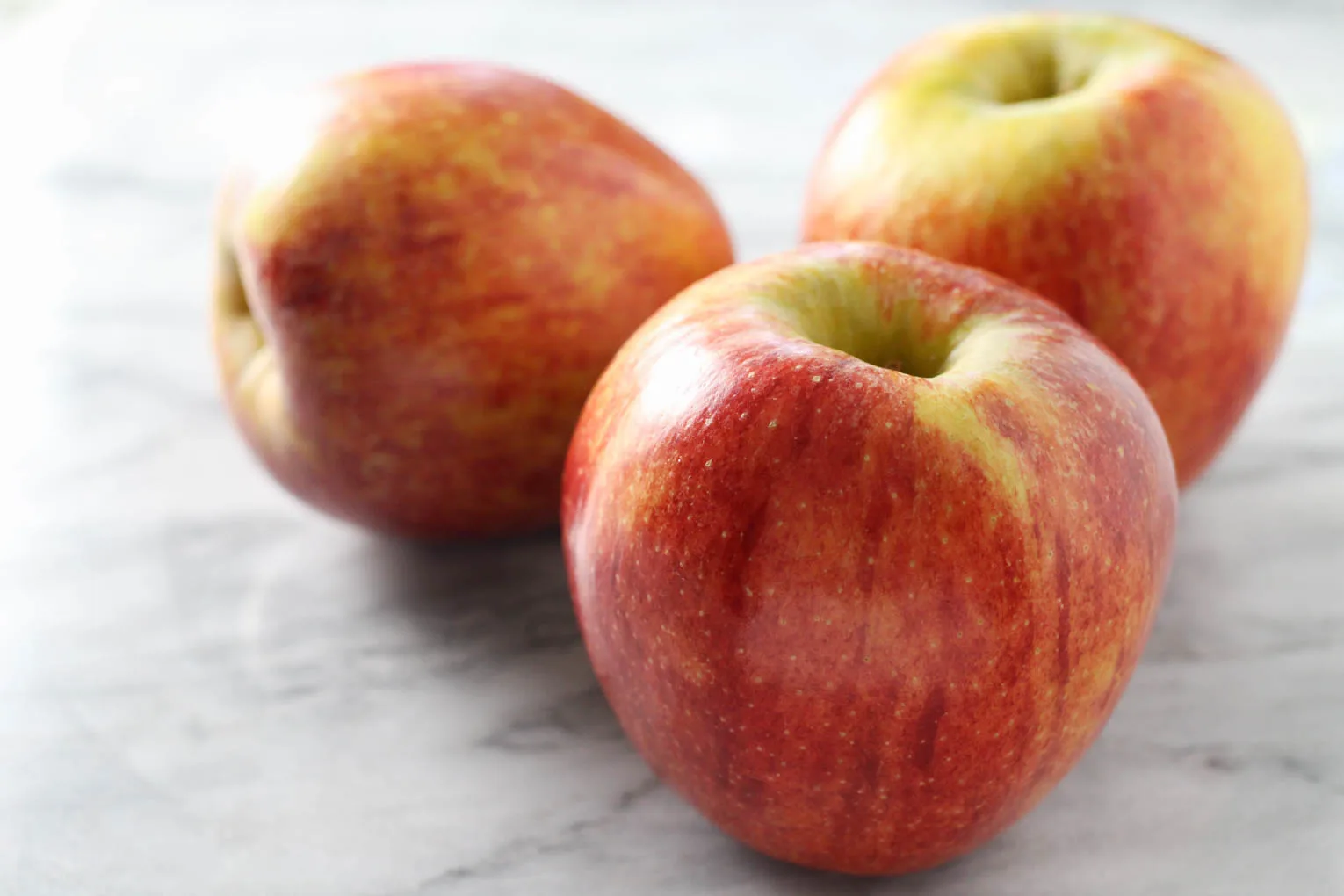
Envy apples were created at the Horticulture and Food Research Institute in New Zealand in 1985.
They are a cross between Royal Gala and Braeburn apples and are available year-round in many commercialized apple markets.
- Color – Dark red to crimson and dotted with whitish-greenish speckles.
- Texture – Smooth, slightly waxy skin with a crisp-succulent bite.
- Taste Profile – Balance of sweet-tart flavor with a refreshing floral aroma.
Fuji
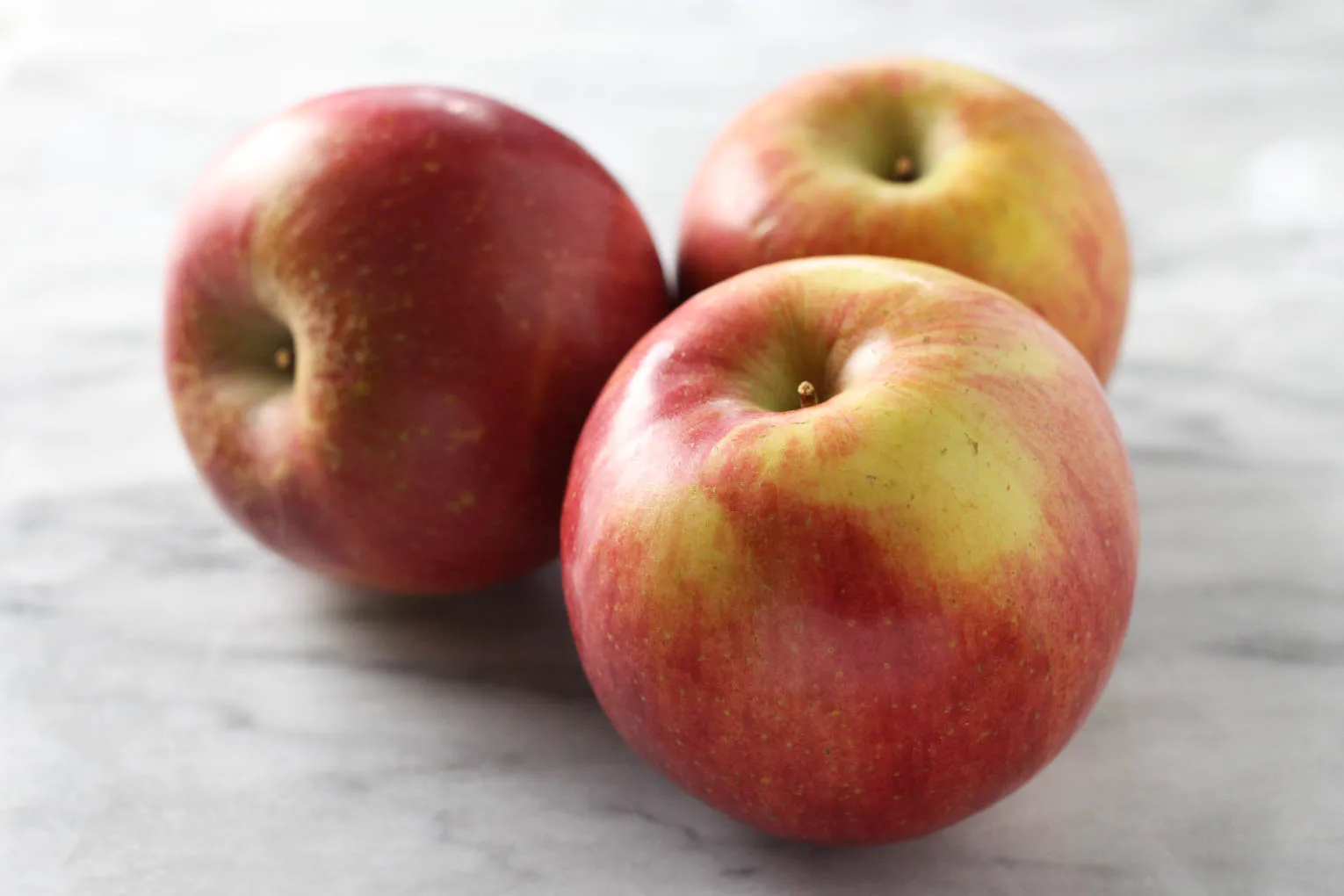
Fuji apples originated in Morioka, Japan, in the late 1930s. They are a beloved apple variety derived from a cross between two American apples: the Red Delicious and Ralls Janet. These juicy apples are perfect for juicing!
Believe it or not, the Fuji tree from the original seedling still flourishes today!
- Color – Mostly bright red and blushed with yellow-green streaks.
- Texture – Thin, tender skin with crunchy, firm flesh.
- Taste Profile – Incredibly juicy with natural honey notes and a touch of tartness.
Gala
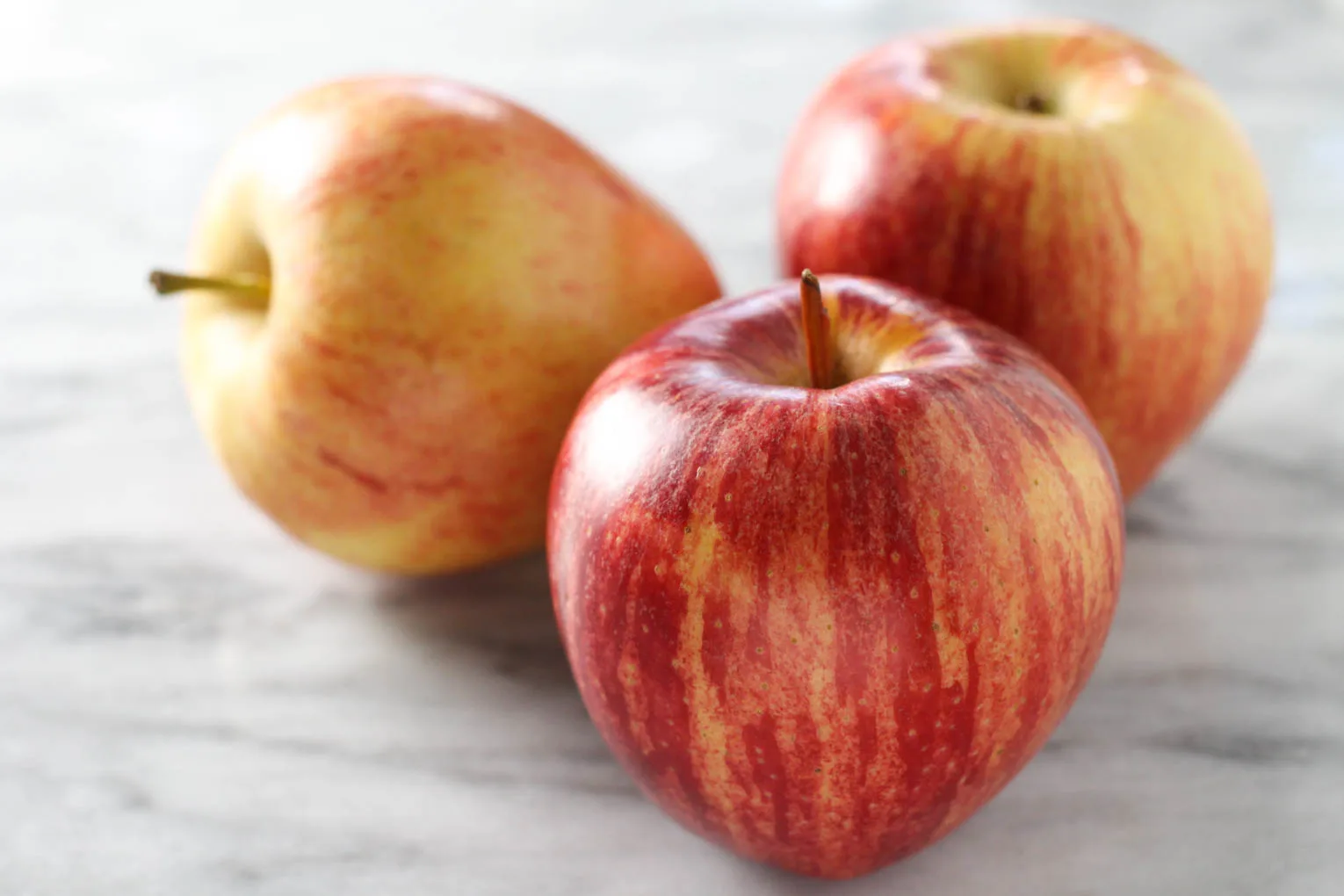
Gala apples (or Royal Gala Apples) were discovered by chance in New Zealand in the 1930s.
They’re named after Her Royal Majesty Queen Elizabeth II because she loved them so much, and understandably so!
- Color – Pinkish-red hue with yellow undertones.
- Texture – Thin, smooth skin with crisp but tender flesh.
- Taste Profile – Mild sweetness with hints of tartness.
Golden Delicious
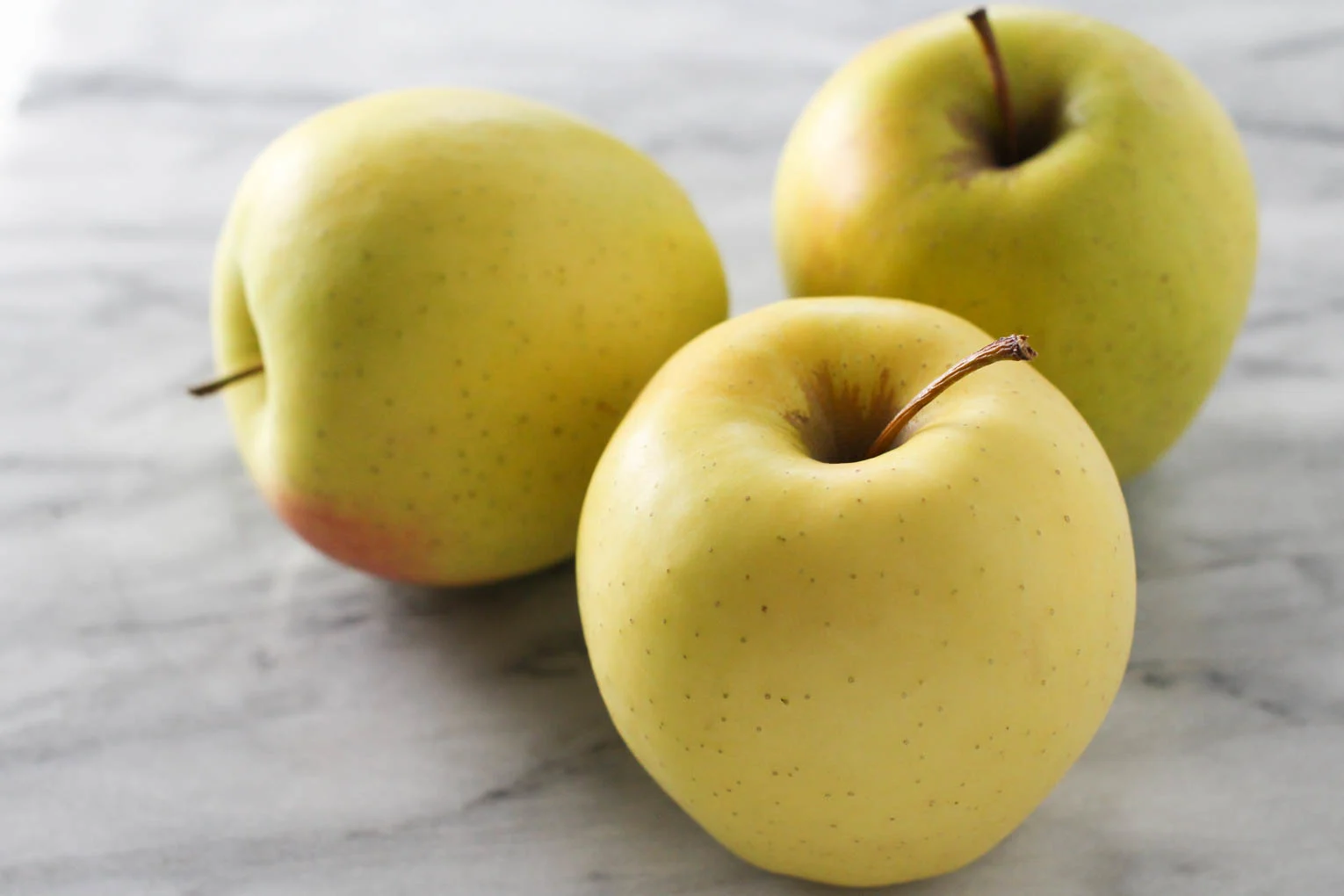
Golden Delicious apples are another apple variety that is a byproduct of a rogue seedling. This one was discovered on a family farm in West Virginia in the late 19th century.
Its popularity as a snacking apple has declined over the years. However, it’s still readily available and a popular choice for apple juice.
- Color – Rich golden-yellow color, sometimes dotted with hints of green and red.
- Texture – Fine-grained ivory flesh with a semi-firm, softer consistency.
- Taste Profile – Mellow and sweet like honey with mild tartness.
Granny Smith
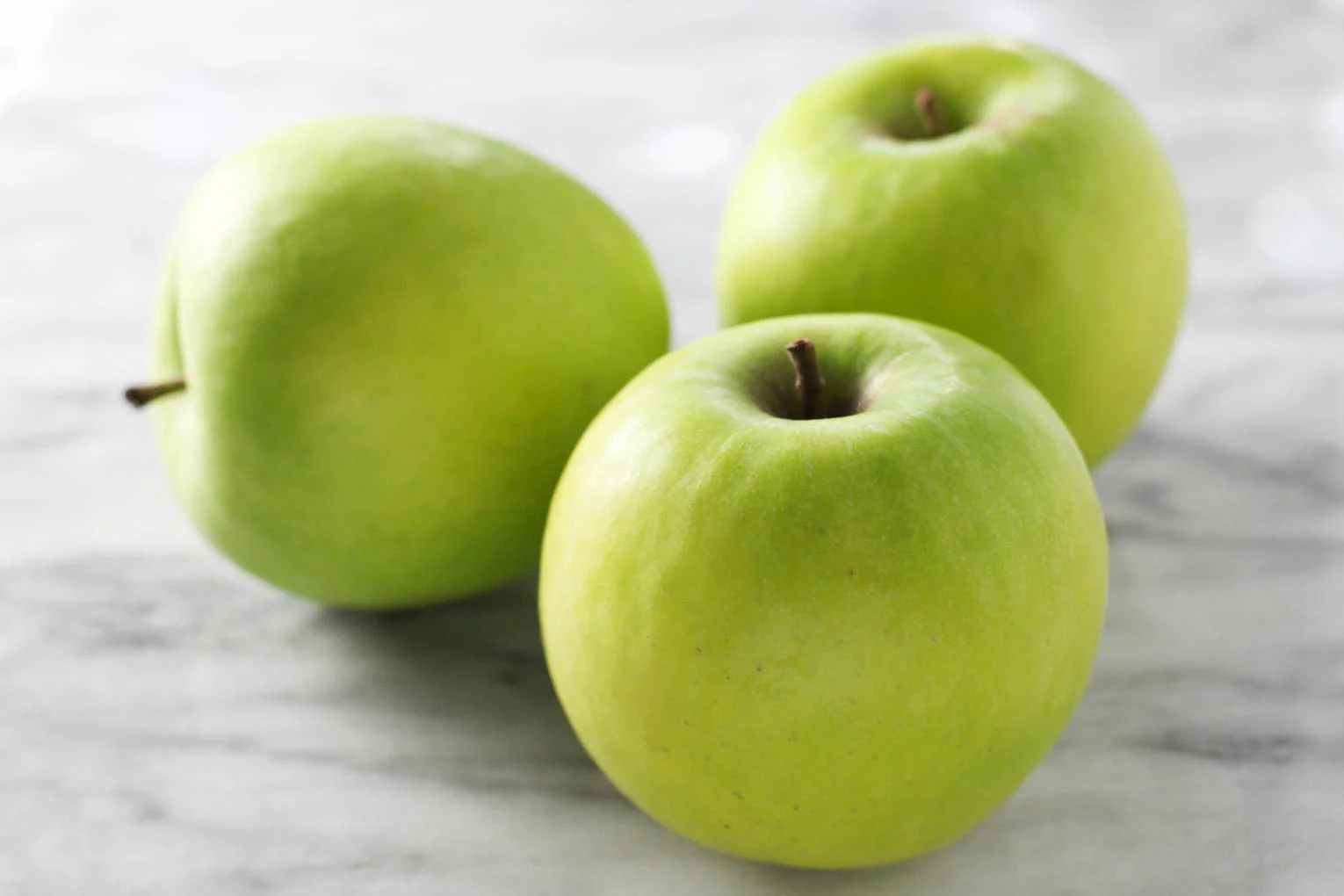
Granny Smith apples were first cultivated in Australia in the mid-19th century courtesy of a chance seedling. They soon became one of the first globally exported varieties.
These days, these green apples rank in the top five U.S. and Australian commercially grown apples. This variety is perfect for making tart apple juice.
- Color – Easily identified by their bright green skin color, which can sometimes feature a slight blush of red.
- Texture – Thick, firm, smooth, slightly chewy skin with the ultimate dense-juicy crunch.
- Taste Profile – Renowned for its sour, tangy taste that packs a refreshing punch of sweet-zing!
Honey Crisp
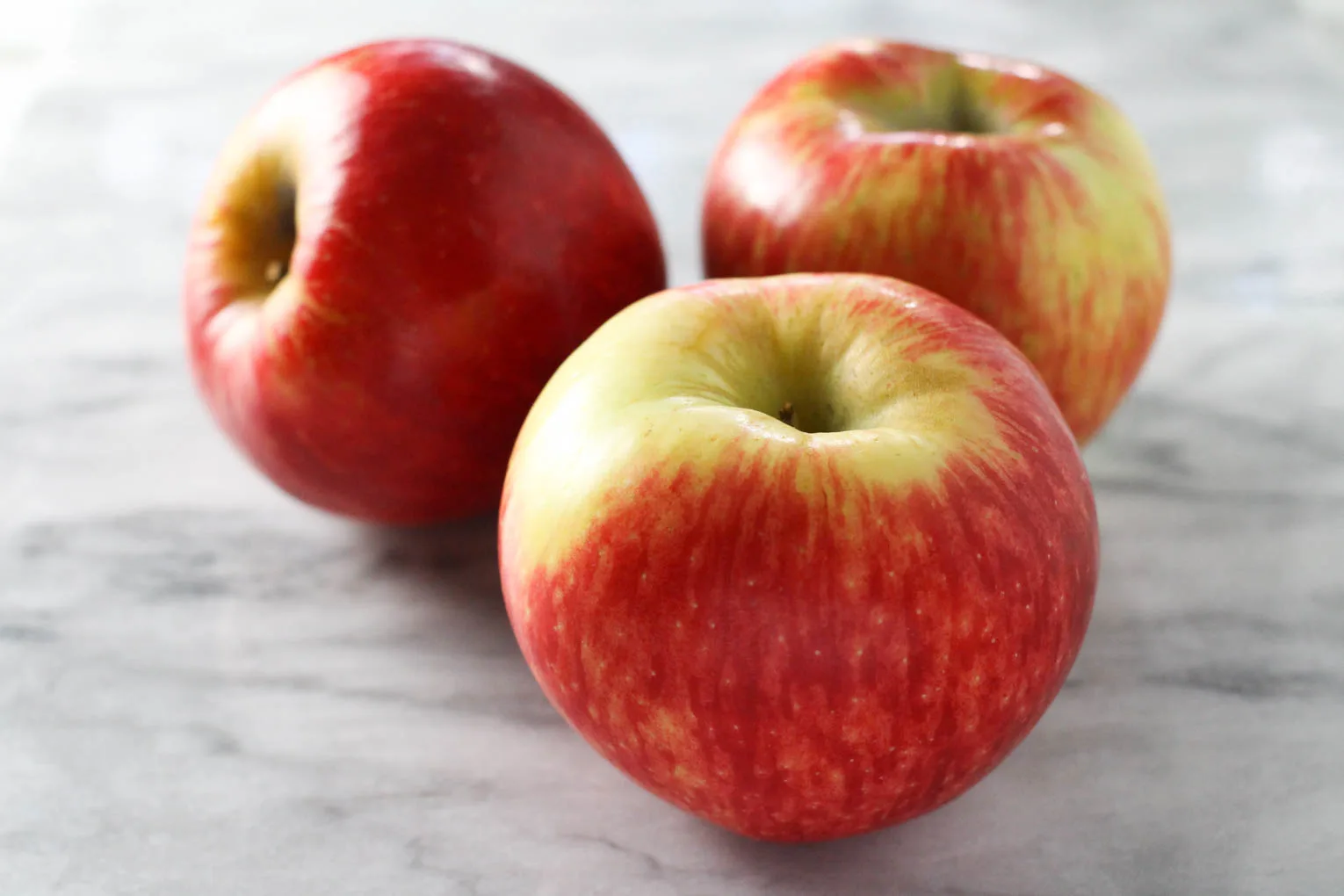
Honey Crisp apples are a beloved apple variety developed through a crossbreeding program at the University of Minnesota in the 1960s.
They’re popular for snacking, salads, desserts, and juicing.
- Color – Distinguishable blotchy red and green skin speckled with flicks of green.
- Texture – Delightfully dense with a delectable fresh-crisp crunch.
- Taste Profile – Balanced sweet-tart flavor with the essence of honey (as the name suggests).
Jazz
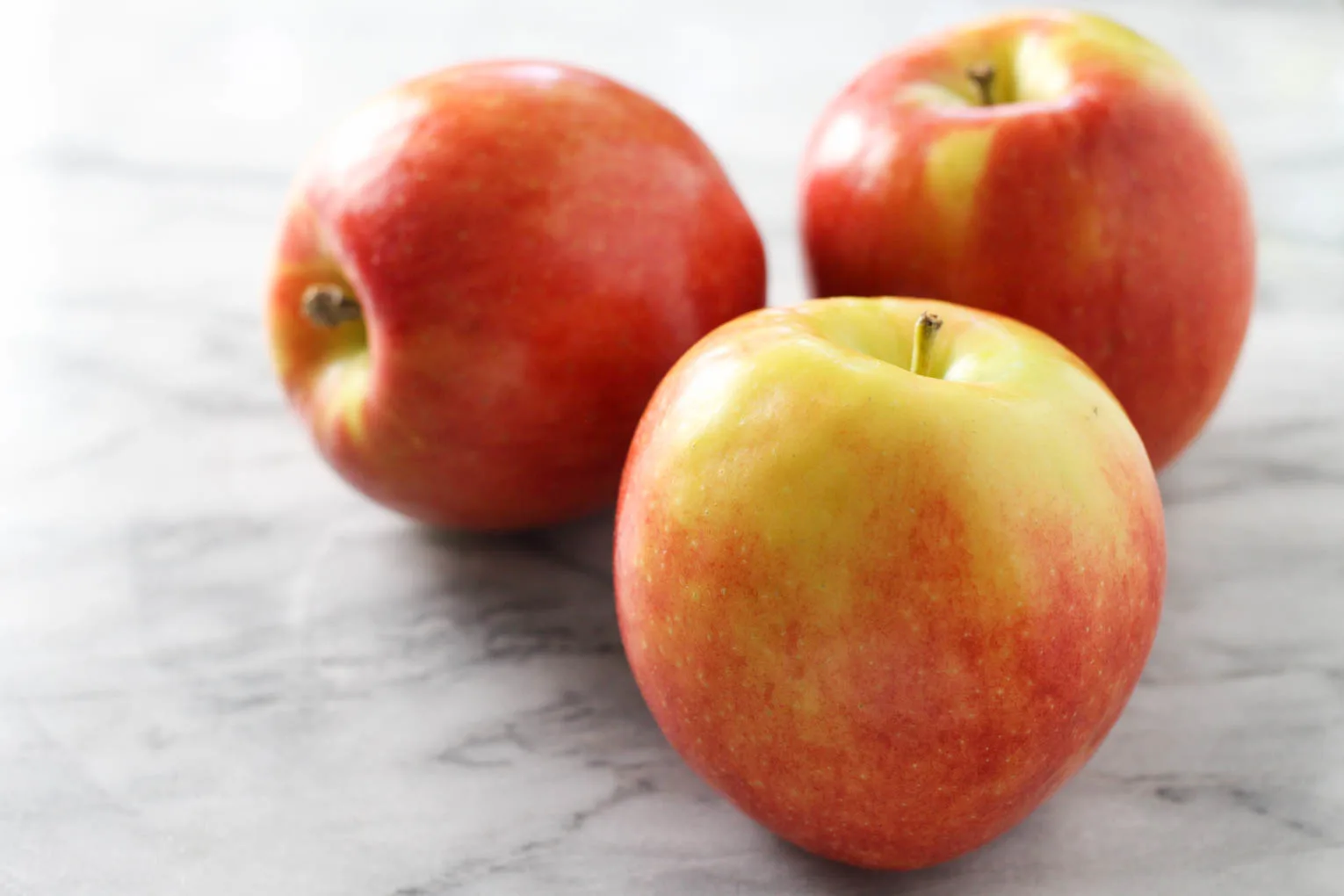
Jazz apples originated in New Zealand in the 1980s, and are a unique crossbreed between the Royal Gala and Braeburn apple varieties, so you get the best of both worlds!
- Color – Deep red skin over a yellow-green base blushed with darker maroon pigmentation.
- Texture – Smooth, glossy skin with very dense, crunchy flesh.
- Taste Profile – Well-rounded balance of sweetness and tartness with the perfect level of acidity.
Jonagold
Jonagold apples are an American-made variety that was developed in the 1940s. It’s a cross between a Jonathan and a Golden Delicious (hence the clever name!).
The flavorful, juicy flesh and balanced flavor make them one of my top picks for juicing!
- Color – Striped with beautiful shades of red, yellow, and green.
- Texture – Crisp and juicy flesh that keeps you wanting more.
- Taste Profile – Rich and fragrant with a balanced sweet-tart flavor.
McIntosh
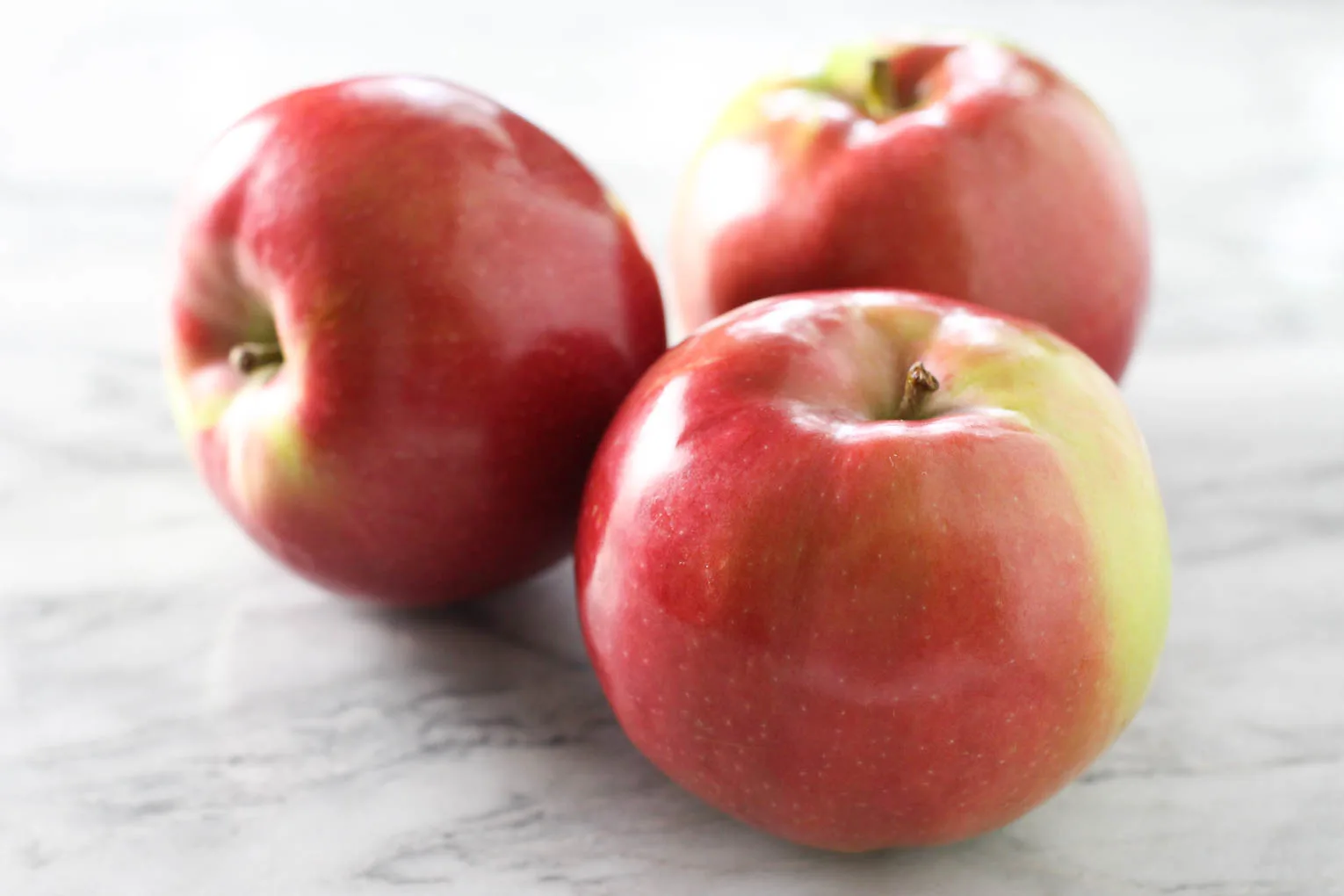
McIntosh apples are named after John McIntosh, a Canadian farmer who discovered this variety in Ontario in the early 19th century.
Unfortunately, they haven’t reached worldwide notoriety, but they are still common in the northeastern region of the U.S., Ontario, and Quebec.
- Color – Deep red with green undertones and white splotches.
- Texture – Thin, smooth skin with tender, juicy flesh that offers a delicate bite.
- Taste Profile – Aromatic and tangy, with a pleasant level of acidity.
Pazazz
Pazazz apples were introduced to the market in 2013, making them a relatively new and exciting variety.
They were developed by apple enthusiast Doug Shefelbine and are a cross between Honeycrisp apples and a second unknown variety.
- Color – Glossy bright red skin color with speckled, yellow undertones.
- Texture – Solid and dense with a crisp, crunchy consistency.
- Taste Profile – Sensationally sweet, tart, and tangy.
Pink Lady
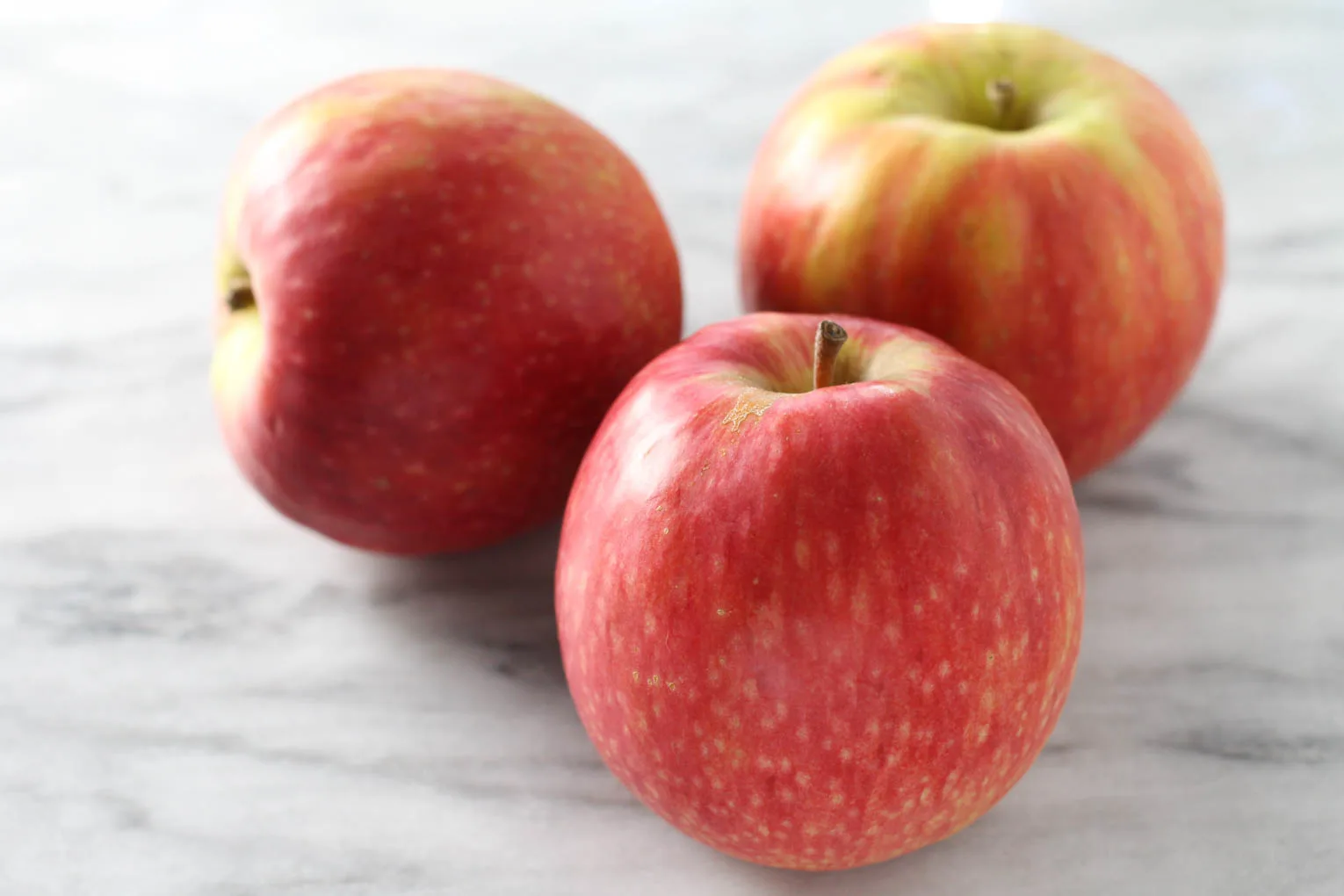
Pink Lady apples (or Cripps Pink) were developed in Australia in the 1970s by crossbreeding Lady Williams and Golden Delicious apples.
Today, they’re a worldwide favorite, honored as the first apple with a trademarked name!
- Color – Pastel pinkish-reddish skin blushed over a yellow-green base.
- Texture – Smooth, glossy skin with firm, crisp flesh offering a succulent crunch when bitten into.
- Taste Profile – Heavenly sweet with the right amount of complementary tangy notes.
Red Delicious
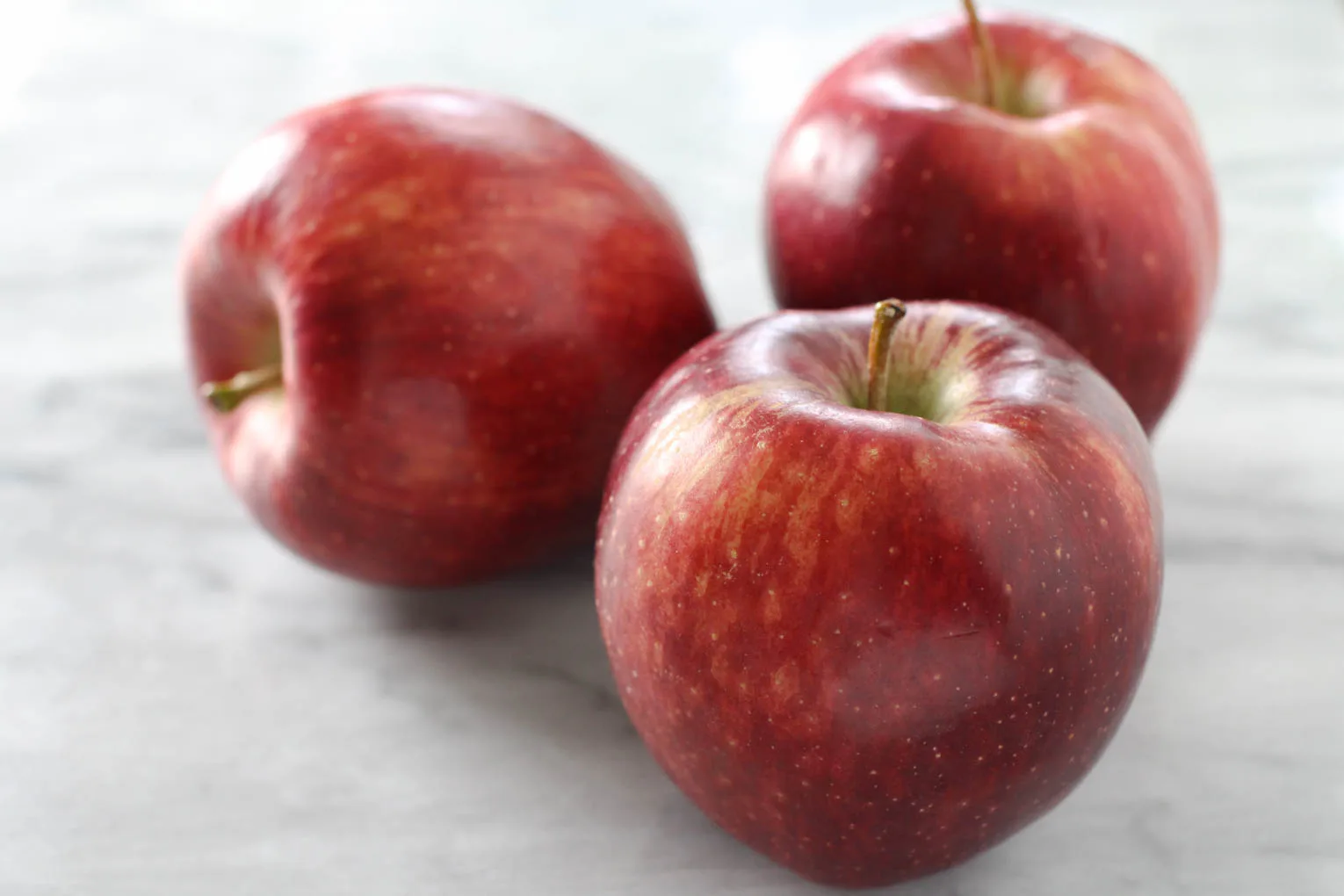
Discovered in the late 1800s, Red Delicious apples are an Iowa native tremendously popular in the U.S. between 1940 and the late 80s.
Despite the terminology, these red apples aren’t as sought-after as other varieties considered more delicious.
- Color – Bright and vibrant red skin, sometimes blushed with green undertones.
- Texture – Firm, slightly bitter-tasting skin with fine-grained flesh, described as “mealy.”
- Taste Profile – Mild and sweet flavor with very little tartness compared to other apples.
Red Prince
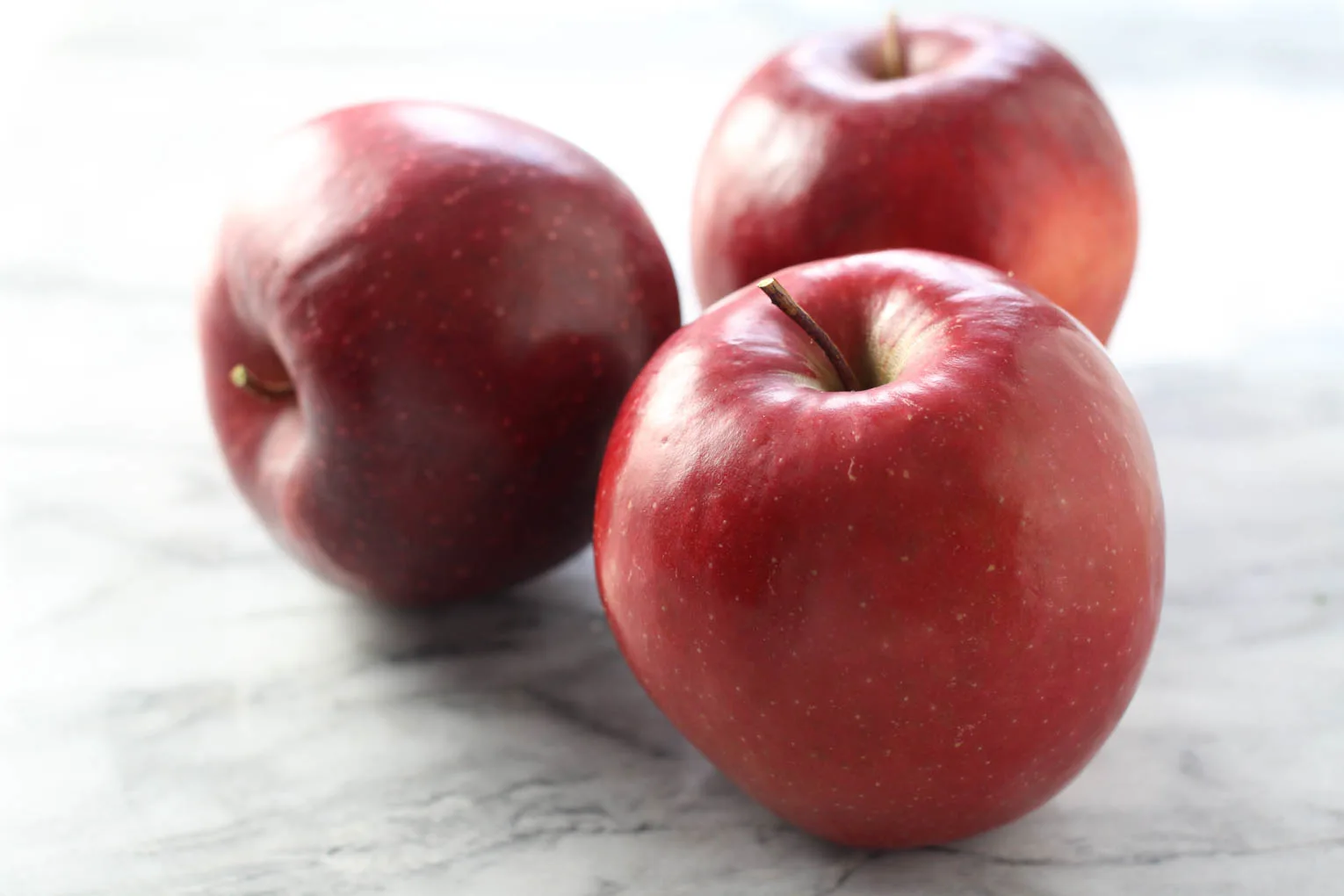
Red Prince apples are fantastic when consumed fresh but also great for juicing.
Originally discovered on the German/Holland border in the 90s, these apples have become a well-cultivated Canadian crop with consistent quality throughout the year.
- Color – Crimson red fading into a deep orange pigment.
- Texture – Crisp and firm with a satisfying crunch.
- Taste Profile – Perfect balance of pleasant sweetness and subtle tanginess.
Smitten
Smitten apples are another New Zealand native resulting from a complex cross-breeding program consisting of Gala, Braeburn, Falstaff, and Fiesta varieties.
- Color – Vibrant blend of red, orange, and yellow hues.
- Texture – Fairly juicy with a moderately dense, crisp texture.
- Taste Profile – Well-balanced and pleasant honey-like flavor with subtle tart notes.
Quick Tips
These apple juicing tips are worth taking note of regardless of the apple variety you select:
- Give the apples a good wash. Commercially grown apples are often treated with chemicals, so if you leave the skin intact, wash the apples well to remove any residue.
- Use a fruit juicer or blender. If you have a juicer, by all means, use it! Otherwise, you can blend the apples in a high-powered blender and strain the pulp to extract the juice. Check out my blender apple juice recipe for further guidance.
- Sneak in more fruits and veggies. Add lemon or juice from your favorite berries and tropical fruits for extra fruity acidity and flavor. Or, experiment with juicing the apples alongside vegetables like carrots, celery, cucumber, beetroot, kale, spinach, and Swiss chard.
Apple Juice Uses
The uses extend far beyond starting your or your toddler’s day with a glass of delicious juice.
Here’s a snapshot of the many ways to incorporate it in your kitchen:
- Cooking – Apple juice provides sweetness and the necessary acidic element for various sauces, marinades, and salad dressings for a tasty fruity, tangy dimension.
- Baking – Apple juice is a natural sweetener and a vital ingredient in creating incredibly moist and tender cakes, muffins, breads, cookies, etc.
- Beverage making – You can use it in cocktails, mocktails, smoothies, and mulled apple cider, of course!
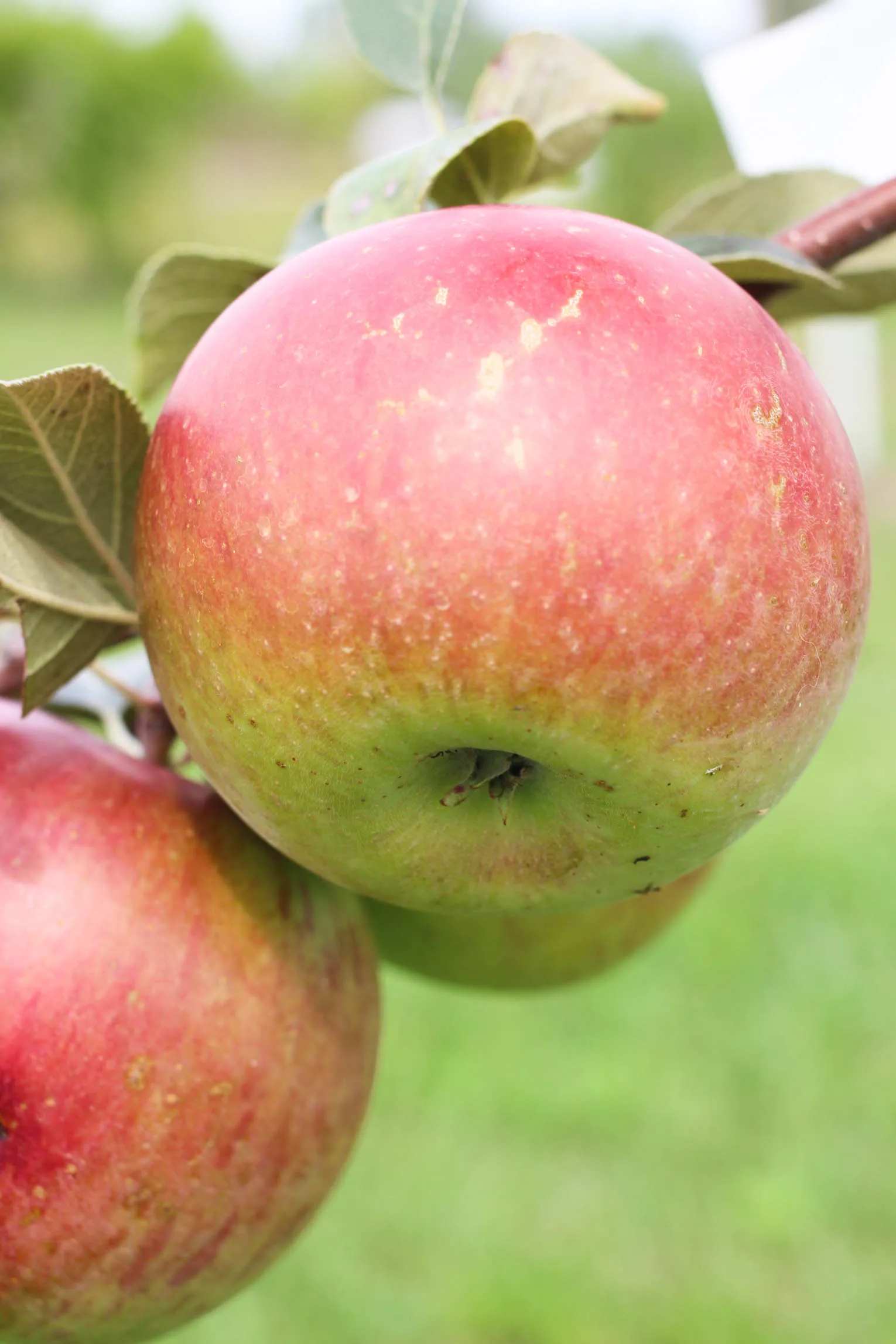
Frequently Asked Questions
Here are a few related questions about making apple juice at home:
What apple variety is most commonly used in apple juice?
Apple juice from the store is typically made with Golden Delicious, Gala, Fuji, or Granny Smith apples.
These varieties are typically used because of their mild, sweet flavor, high juice content, and visually appealing color, producing smooth, sweet juice.
What type of apple produces the most juice?
When it comes to juicing apples, Granny Smiths, Gala, and Fuji are undoubtedly the juiciest of the juicy!
The flesh contains more water than other apple varieties, resulting in a greater yield of fresh juice when pressed or blended.
How many apples make 1 cup of apple juice?
The number of apples you need for 1 cup of apple juice varies depending on the size and juiciness of the apple variety and the juicing method used.
Generally, it takes 2 to 3 medium-sized apples to make 1 cup of juice.
Should you peel the skin before juicing apples?
Whether or not you peel the skin comes down to personal preference.
While apple skin does contain fiber and nutrients, it can have a slightly bitter taste and a waxy coating that can alter the taste and texture of the juice. Peeling the apples before juicing is best if you prefer smooth, clear juice.
Do you core apples before juicing?
In most cases, you should core apples before juicing them, as the core contains bitter apple seeds and tough fibrous material.
Additionally, coring the apples makes pressing as much juice as possible easier.
Now It’s Your Turn
If you are still reading this article, you must be an apple juice lover like me!
Please share with us which apple variety you prefer for making your own apple juice.
Do you like sweet apples or tart apples?
Have you tried any of the above apple varieties? Maybe you know of a good juicing apple that isn’t on this list?
Let us know in the comments below!
More Articles You Might Like
Check out these articles for more helpful cooking how-tos:
